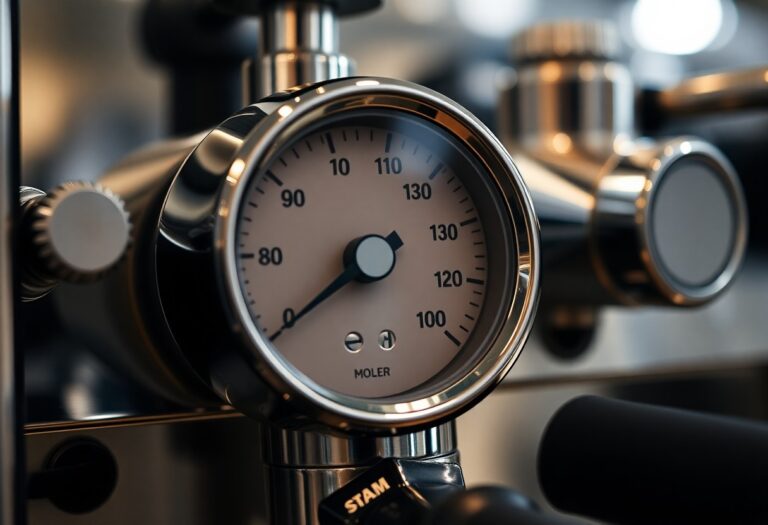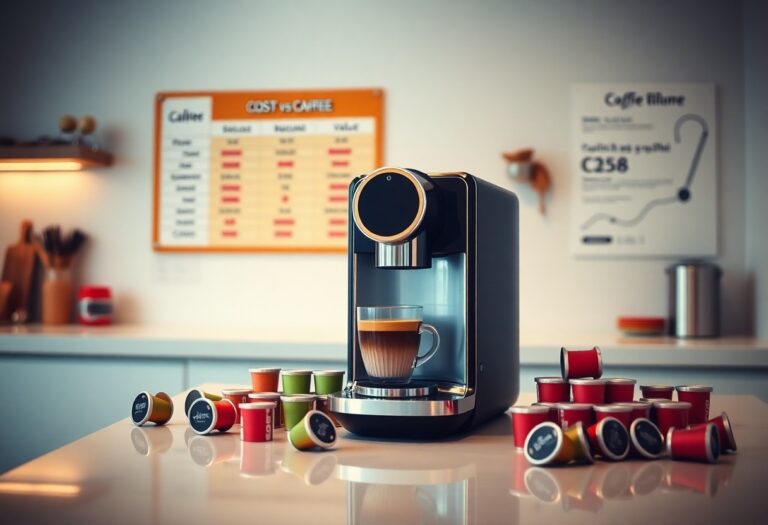How to Clean a Black and Decker Coffee Machine: Cleaning Guide
The Black and Decker coffee machine is a beloved appliance in many households, known for its reliability and convenience in brewing that perfect cup of coffee. Regular maintenance is crucial to ensure the machine’s optimal performance and longevity. In this cleaning guide, you will discover essential tips to keep your Black and Decker coffee machine running smoothly.
Black and Decker coffee machines are popular for their user-friendly design and consistent brewing quality.
Regular cleaning is vital to prevent mineral buildup, maintain taste quality, and extend the lifespan of your coffee maker. For instance, understanding how much vinegar to clean a coffee machine can be very helpful.
You will learn to identify signs indicating a dirty machine, establish a recommended cleaning schedule, and follow a step-by-step cleaning process for your Black and Decker coffee machine. If you’re interested in more detailed instructions, you might find this guide on how to clean a Cuisinart coffee machine useful as it shares similar cleaning principles.
Moreover, if you own a Keurig coffee machine as well, you may want to check out this comprehensive step-by-step guide on how to descale a Keurig coffee machine. This could provide valuable insights into maintaining another popular brand of coffee machines.
Signs that Your Black and Decker Coffee Machine Needs Cleaning
Recognizing the signs of a dirty coffee machine helps you maintain your Black and Decker coffee maker before issues worsen. Regularly checking for these maintenance indicators ensures your machine performs well and lasts longer.
Look out for these signs:
- Slow brewing or incomplete brew cycles often result from mineral buildup inside the water lines or heating elements. If your coffee takes noticeably longer to brew or stops mid-cycle, it’s time to clean it.
- Visible mineral deposits appear as white or chalky residue on the water reservoir, carafe, or inside the machine. These deposits come from hard water minerals accumulating over time.
- Excess steam or unusual noises during brewing indicate blockages caused by scale or residue restricting water flow. You might hear gurgling or sputtering sounds not typical of normal operation.
- Off-flavors in coffee, such as bitterness or sourness, suggest leftover oils and mineral buildup affecting taste. If your brew tastes different than usual despite fresh grounds, it signals a need for thorough cleaning.
Monitoring these signs protects your investment and keeps every cup tasting fresh. However, if you’re considering trying out different brewing methods while your coffee machine is being cleaned, there are several alternatives to explore:
- Using a French press, which offers a unique flavor profile and is quite simple to use.
- Experimenting with manual brewing methods such as making coffee without a machine, which can be a fun activity.
Regular Cleaning Schedule for Black and Decker Coffee Machines
- Maintenance Schedule: Establish a consistent cleaning routine to maintain the performance of your Black and Decker coffee machine, similar to the cleaning schedules recommended for other coffee machines.
- Frequency of Cleaning:
- Recommended cleaning frequency is every two months or after 60 uses to prevent mineral buildup and ensure optimal brewing.
- Adjust the cleaning schedule based on the hardness level of your water supply. Hard water may require more frequent cleaning to prevent scale accumulation.
By adhering to a regular maintenance schedule, you can prolong the lifespan of your Black and Decker coffee machine and enjoy consistently delicious coffee without any flavor distortions. If you’re interested in exploring other options, you might want to consider some of the best coffee machines recommended available in the market.
Step-by-Step Guide to Cleaning a Black and Decker Coffee Machine
When it comes to cleaning your Black and Decker coffee machine, following a step-by-step process ensures effective descaling and maintenance. Here is a detailed guide on how to clean your coffee maker properly:
1. Preparing the Cleaning Solution:
- Determine the proper ratio of vinegar to water based on the size of your coffee maker. For a comprehensive understanding of how to use vinegar as a natural cleaning method, refer to this guide.
- For a 5-cup machine, fill the reservoir with vinegar up to the 2-cup line, then add water.
- If you have a 12-cup programmable coffee maker, fill vinegar up to the 6-cup line and water up to the 10-cup line.
2. Running the Cleaning Cycle:
- If your Black and Decker coffee machine features an Auto-Clean function, utilize this setting for convenience.
- For machines without an Auto-Clean function:
- Start a manual brew cycle with the descaling solution in the reservoir.
- Pause the cycle halfway through and allow it to soak for 15-30 minutes to break down mineral deposits effectively.
- Resume the brew cycle to complete the cleaning process.
By following these steps diligently, you can ensure that your Black and Decker coffee machine remains free of mineral buildup and residue, allowing you to enjoy fresh and flavorful coffee with every brew. Regular maintenance is key to prolonging the lifespan of your coffee maker and maintaining its optimal performance.
If you also own other types of coffee machines like K-Cup or Keurig models, it’s essential to understand their specific cleaning requirements. For instance, [cleaning a K-Cup coffee machine](https://www.coffeemakerexpert.com/how-to-clean-a-k-cup-coffee-machine-maintenance-instructions) involves different steps than those for a traditional Black and Decker model. Similarly, if you’re looking for a [complete operating guide for using a Keurig coffee machine](https://www.coffeemakerexpert.com/how-to-use-a-keurig-coffee-machine-complete-operating-guide), or an ultimate maintenance guide for cleaning a Keurig coffee machine, these resources will be incredibly helpful.
Rinsing and Final Clean-Up
After running the cleaning cycle with the vinegar solution, it’s crucial to rinse the Black and Decker coffee machine thoroughly:
1. Flushing Out Residue
- Discard the vinegar solution from the carafe.
- Run a brew cycle with plain water using the brewing instructions to flush out any remaining vinegar and loosened mineral deposits.
- Repeat this rinsing process if needed until there is no vinegar smell left in the machine.
2. Cleaning Exterior and Removable Parts
- Use a damp cloth to wipe down the exterior of the coffee maker.
- Wash removable parts like the carafe and filter basket with warm soapy water or place them in the dishwasher (top rack) for a thorough clean.
- Ensure all parts are completely dry before reassembling the machine for future use.
Daily Maintenance Tips for Your Black and Decker Coffee Machine
Daily maintenance is crucial for keeping your coffee machine running smoothly and extending its lifespan. By paying attention to simple tasks, you can prevent residue buildup that can affect taste and performance.
1. Dispose of Grounds Properly
Remove used coffee grounds immediately after brewing. Leaving them inside the basket promotes mold growth and clogging.
2. Wipe Down Surfaces Regularly
Use a damp cloth to wipe down the exterior and drip tray daily. This prevents stains and sticky buildup that attract dust and bacteria.
These small habits reduce the need for intensive cleaning sessions, maintaining consistent coffee quality every day. For more comprehensive cleaning strategies, consider checking out essential maintenance tips or specific guides such as those for Mr. Coffee, Krups, or Ninja coffee machines. If you’re interested in exploring different brewing methods, our guide on how to make coffee with an espresso machine could provide valuable insights.
Conclusion
Remember, Black and Decker coffee machine maintenance is vital for consistent brew quality and machine longevity. By regularly cleaning your coffee maker, you ensure a delicious cup of coffee every time. It’s also important to understand how to properly use your coffee machine for best results, following a comprehensive operating guide. Stay diligent in your maintenance routine and enjoy fresh coffee without any brewing hiccups. Happy brewing!







